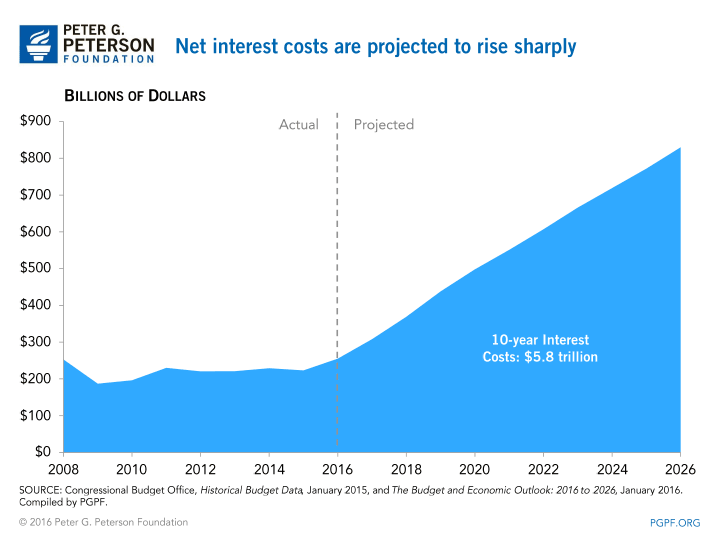You are here
Chart of the Week: Net interest costs on national debt to rise
When the Congressional Budget Office released a new report in January announcing that the federal budget outlook has worsened considerably from last year, the national media took note. Editorial boards, including the Washington Post and the Des Moines Register took the presidential candidates to task for failing to offer substantive plans to address our rising national debt. Over the next decade, CBO projected not only that federal debt will rise to 86% of gross domestic product (GDP) but also that net interest costs during that period will total $5.8 trillion.

As debt continues to accumulate and interest rates increase, net interest costs on the debt are projected to more than triple over the decade, soaring from $255 billion in 2016 to $830 billion in 2026. Higher interest costs could crowd out important public investments that can fuel economic growth — priority areas like education, R&D, and infrastructure. In addition, growing federal debt reduces the amount of private capital for investments, which hurts economic growth and wages. A nation saddled with debt will have less to invest in its own future.
Related: What Is The National Debt Costing Us?
